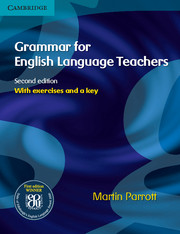27 - Relative clauses
Published online by Cambridge University Press: 09 February 2023
Summary
Key considerations
Long before we expect or require learners to use relative clauses, we can help them to recognise and understand them by systematically drawing their attention to where and why they are used in real conversation and texts. Native English-speaking teachers often underestimate the difficulty that relative clauses can pose for comprehension.
Course materials often introduce relative clauses only at late intermediate or advanced levels, and may expect the students to learn all the important features together. In fact we can teach relative clauses bit by bit, starting at quite low levels where, for example, learners can use them to identify people in response to the question Who …?
Who’s Mary? – She’s the person who’s dancing. She’s the person who’s getting into a car.
Although course materials often consider the distinction between defining and non-defining clauses only in the context of relative clauses, this distinction is fundamental to many types of clause and is dealt with in detail in Chapter 29.
Indeed, it is easy to confuse learners unnecessarily by teaching general features of clause construction such as ellipsis and ‘defining’ versus ‘non-defining’ at the same time as teaching relative clauses. Students can learn these general features beforehand and in simpler grammatical contexts.
What are relative clauses?
What do they do?
Relative clauses describe or provide information about something or someone that we have usually already specified.
I like working with students who appreciate what I do. (who … refers to students.
Her husband died, which was the beginning of her depression. (which refers to Her husband die.)
Relative clauses are similar in function to adjectives.
I like working with students who appreciate what I do./with appreciative students.
Relative clauses also enable us to combine clauses without repeating things, e.g. instead of saying:
I tried to help a child. The child was crying her eyes out.
we say:
I tried to help a child who was crying her eyes out.
and instead of saying:
I had to translate the whole text. Translating the whole text was difficult for me.
we say:
I had to translate the whole text, which was difficult for me.
- Type
- Chapter
- Information
- Grammar for English Language Teachers , pp. 406 - 417Publisher: Cambridge University PressPrint publication year: 2010



